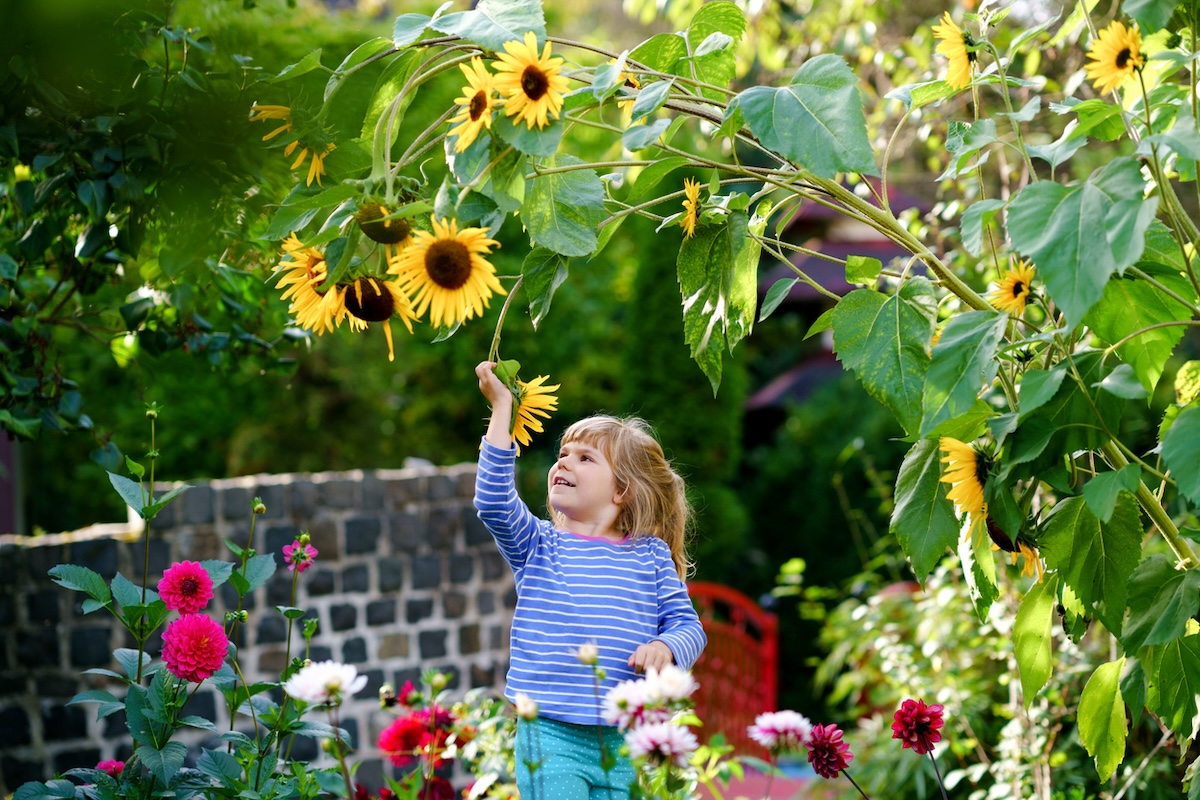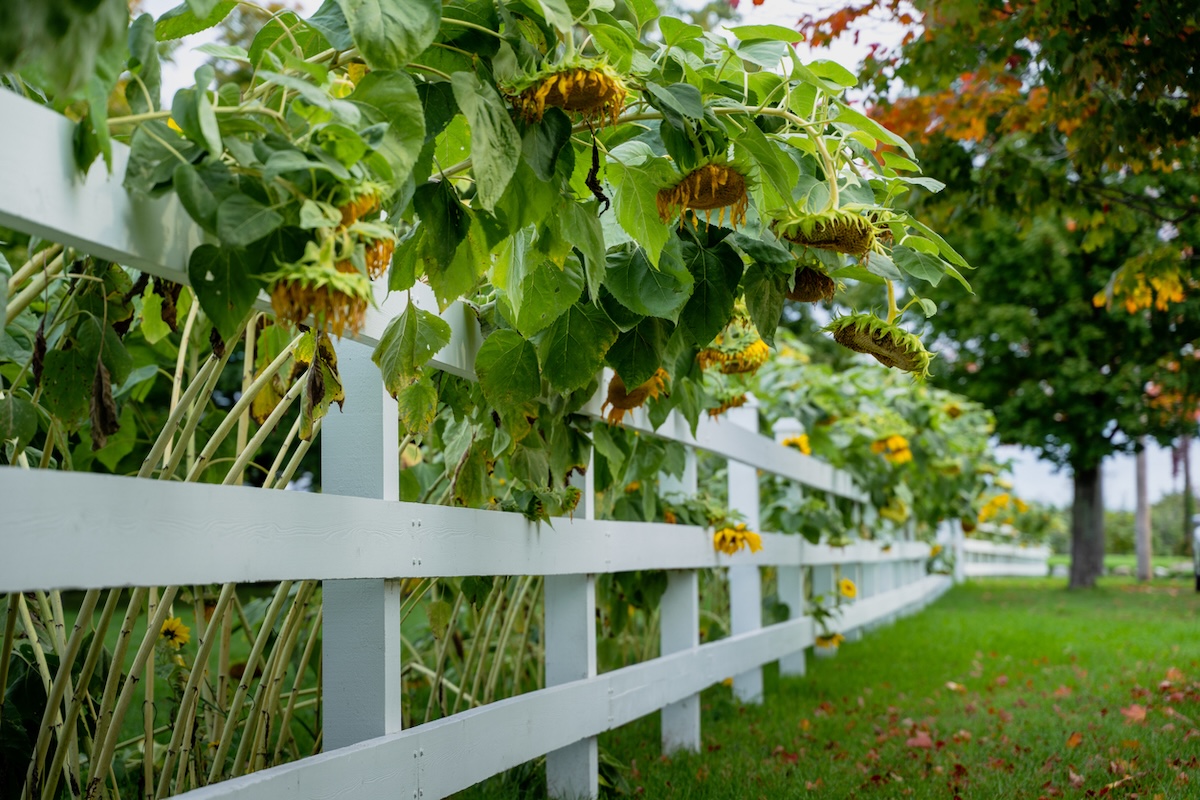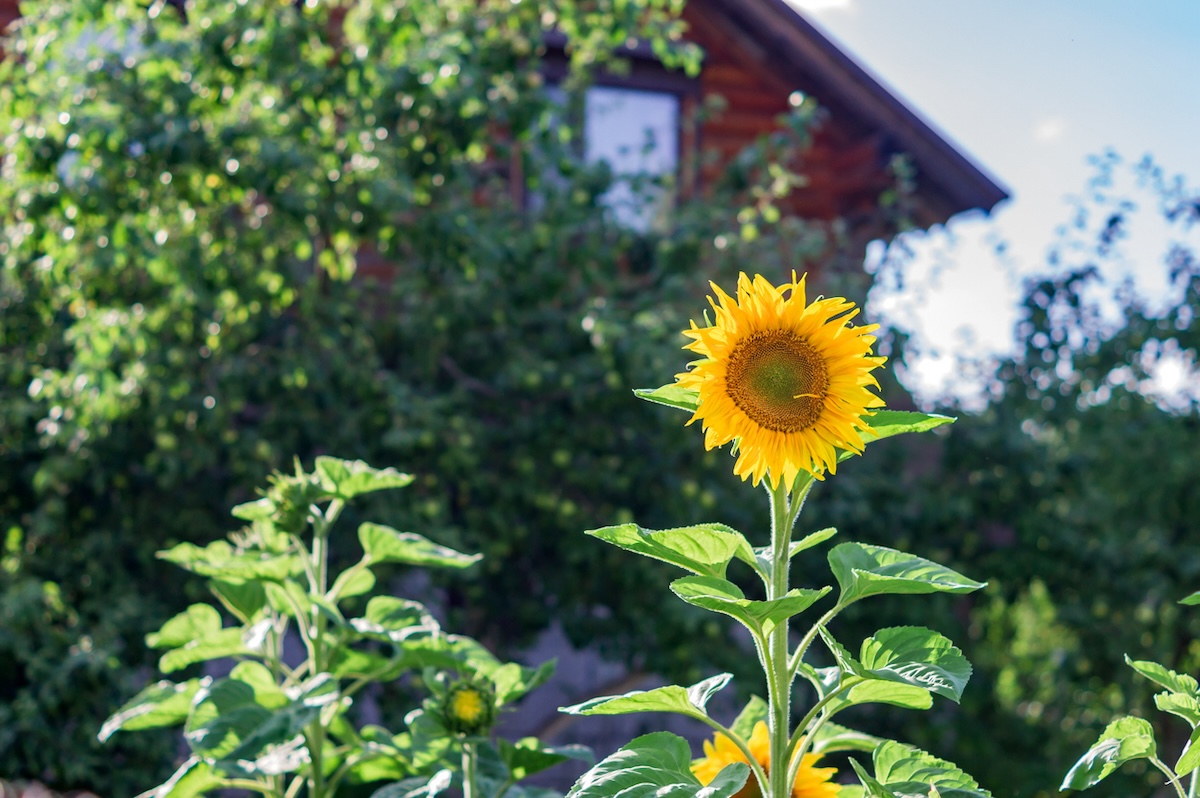We may earn revenue from the products available on this page and participate in affiliate programs. Learn More ›
Originally cultivated by Native Americans around 3,000 B.C., sunflower is a native North American plant that has become a worldwide favorite, valued for its beauty as well as its numerous uses, including culinary, medicinal, and as dye and building material.
Prized for its towering height and cheerful blooms, the sunflower is beloved by gardeners and pollinators alike. Thanks to 70 different sunflower varieties providing multiple choices, and because growing sunflowers is relatively easy, they are a popular backyard garden addition.
Knowing how to grow sunflowers can add colossal beauty to your garden that everyone from birds and pollinators to Van Gogh wannabes adore.
Growing Sunflowers at a Glance
Common Name: Sunflower
Scientific Name: Helianthus annuus
Hardiness Zone: Zones 2 to 11, grown as an annual
Soil: Well-drained, all pH types
Light: Full sun
Water: Moderate, tolerant of dry conditions
Food: Not necessary if they have compost and rich soil, but fertilizer providing phosphorus and potassium is helpful
Propagation: Cuttings or seeds
Safety: Not poisonous
Sunflower Characteristics
Native to North America and sometimes considered the “fourth sister” to corn, beans, and squash in Native American culture, sunflower, is a fast-growing annual and member of the aster family that produces large, daisy-shaped flowers.
The blooms on this heliotropic plant track the sun from east to west, returning to rest in an east-facing position at night while they wait for the sun’s return in the morning. This allows them to take in 10 percent more sun and makes an especially impressive display in mass plantings, such as in a sunflower garden.
Grown atop thick, “hairy,” sturdy stems, some sunflower varieties can reach 10 feet tall—or taller! While the black- or brown-centered, yellow-petaled sunflower is perhaps the most familiar variety, they can also come in shades of brown, orange, and red, or with yellow centers.

Recommended Sunflower Varieties
From the traditional yellow flowers atop stems that reach 8 to 10 feet tall to multicolored varieties that barely top 1 foot, there’s a sunflower for just about everyone. Here are a few favorites:›
- Mammoth: This tall, traditional sunflower that touches the sky at 12 feet or more provides plenty of seeds for feeding gardeners and the birds who fly that high.
- Teddy Bear: At the opposite end of the measuring stick, this variety is suited for small gardens, reaching only 2 to 3 feet tall, but still producing plentiful deep golden 5-inch flowers.
- Sunrich Gold: This moderately sized 5-foot-tall plant produces pollen-free, 4- to 6-inch golden flowers with green centers that are excellent in arrangements and bouquets.
- Autumn Beauty: This 7-foot-tall variety produces numerous 6-inch flowers of multiple hues, from yellow to bronze to mahogany.
Planting Sunflowers
Planting sunflower seeds is pretty straightforward, with just a few easy steps to follow. For continuous blooming throughout summer, plant seeds successively, every couple of weeks.
When is the best time to plant sunflowers?
The best time to plant sunflower seeds is after the last frost, when the soil has warmed to at least 50 degrees Fahrenheit. Because they don’t like to have their roots disturbed, it’s best to direct-sow rather than start sunflower seedlings indoors and transplant them outside in hopes of getting a head start on blooming.
Where can sunflowers grow?
Sunflowers require a minimum of 6 to 8 hours of sun daily. Because they tend to get top-heavy, planting them along a building or fence that can support them and protect them from strong wind may be beneficial.
They require rich, well-draining soil; they do not like “wet feet.” Because they have long taproots that like to stretch out, they need to be planted in soil that is not compacted.
How do you plant sunflowers?
Seeding a sunflower differs little than planting other types of garden seeds.
- Dig a shallow trench. If planting multiple rows, space about 30 inches apart.
- Plant seeds 1 to 2 inches deep, about 6 inches apart.
- Cover and water.
It is recommended to thin varieties that reach great heights to 1 to 1.5 feet apart, once seedlings emerge.

Watering Sunflowers
Deep but infrequent watering—particularly of young plants—will help sunflowers develop strong root systems, which can help prevent them from toppling over in strong winds. And while this plant can withstand brief periods of drought, regular watering (an inch per week) can encourage more sunflower blooming. They don’t like standing water or overly wet soil, however.
Fertilizing Sunflowers
Thanks to their long taproot, sunflowers can easily access and use nutrients in the soil. Adding compost to the soil, particularly if it is poor, will benefit the plant. If you really feel the need, you can add a balanced fertilizer, 10-10-10 or 20-20-20. A slow-release fertilizer can help avoid overfertilizing, which may result in weak or broken stems. When fertilizer is applied, watering will help distribute it to their roots.
Safety Considerations
Sunflowers are not toxic to humans or animals, but their coarse, hairy stems may cause minor skin irritation if touched. The petals, leaves, flower heads, and stems are edible, but large quantities can cause stomach upset.
The effect sunflowers have on other plants is another story. As an allelopathic plant, sunflowers release substances from their leaves, stems, and roots that can cause stunted growth or decreased yield in other plants. Plants particularly sensitive to being planted near sunflowers include potatoes, pole beans, lettuce, impatiens, and petunias.

Potential Pests and Diseases
Like baseball players passing time in the dugout, some birds and rodents are partial to sunflower seeds. Helianthus annuus can also be attacked by a few pesky insects, such as the sunflower moth, which lays eggs on the plant and feeds on flower heads, but sunflowers also attract beneficial insects like bees and butterflies.
Fungus, rust, or powdery mildew can impact sunflowers. These can be treated with a general garden fungicide spray. If plants have sufficient air circulation, they’re less likely to suffer from these problems—which is why it’s important to thin them after they sprout if seedlings are too close together.
Harvesting Sunflower Seeds
Having beautiful flowers in the garden to enjoy or to benefit pollinators is not the only reason for growing sunflowers. Some gardeners grow them to harvest seeds for backyard birds or for personal use, whether simply eating the seeds as snacks or extracting the oil for cooking. Some gardeners will harvest a certain number of seeds for future sunflower seed growing.
Particularly if you have engaged in succession planting, you’ll want to watch for signs that the sunflowers are ready for harvesting. No matter what purpose you plan to harvest seeds for, be sure you do so before the birds get to them or you won’t have a crop left to gather.
The fading of the flower signals it’s time to harvest. The back of the flower head begins to turn yellow or brown and will start to droop. The center becomes rounded, indicating that the seeds are fully developed.
When is the best time to harvest sunflower seeds?
The typical lifecycle of sunflowers, depending on variety, is 90 to 125 days. Their bloom time lasts from mid-summer through fall. At the end of the season, it’s time to harvest sunflower seeds for planting, for feeding the birds, or for eating.
The sunflowers will alert you when their seeds are ripe for the taking by hanging their heads, which begin turning yellow or brown.

How do you harvest sunflower seeds?
When it’s time to harvest sunflower seeds, follow these simple steps to collect them with as little loss as possible.
- Cut the entire flower head, with about a foot of stem attached, using sharp scissors or pruners.
- If the seeds aren’t dry, hang in a warm, dry space that insects and rodents can’t access, and cover with cheesecloth or a paper bag, allowing for ventilation.
- When seeds are dry, lay the flower heads on a flat surface and rub your hand over the surface to loosen the seeds.
How do you store sunflower seeds?
If you plan to save some seeds for replanting next season, make sure they are dry. Then, place in an airtight container and store in a cool, dry spot until spring.
If you’re storing seeds in order to feed the birds over the winter, ensure that the flower head is dry before placing it in a paper bag. Place that in a warm, dry place until you’re ready to set it out for the birds.
Looking for more flowers to grow from seed? Check out our guides on growing marigolds, petunias, and morning glory.


